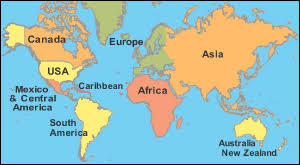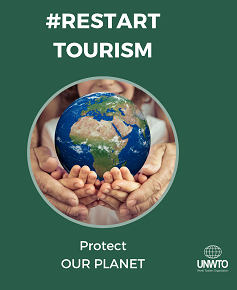Asia Pacific: world’s fastest-growing travel region in 2013

Singapore : Asia Pacific is set to continue to lead as the world’s fastest-growing travel region next year, reaching US$357 billion, a 64% increase over 2009, according to a study released today at ITB Asia by industry research authority, PhoCusWright.
ITB Asia, ‘The Trade Show for the Asian Travel Market’, now in its fifth year, opened today and will be held until Friday, 19 October at The Sands Expo and Convention Center, Marina Bay Sands, Singapore.
“Asia Pacific is definitely one of the growth engines driving global tourism and at this year’s show we’re seeing exhibitors from as far as South America and South Africa which confirms the optimism they share for this region,” said Dr. Martin Buck, Vice President, Messe Berlin (Singapore), organiser of ITB Asia.
“This year will be the largest ITB Asia show to date and we’re seeing a double-digit growth in all segments of the show. We have 865 exhibiting companies from 72 countries, which is a 15% increase from 2011, and about 13% and 17% rise in gross and net floor space respectively compared to last year. We also have over 3720 minutes of conference content to be delivered this year, which is around 24 % up from 2011. It is without a doubt that ITB Asia has clearly established itself as the strategic gateway for the global travel trade to reach out to this region,” added Dr. Buck.
ITB Asia 2012 completely sold out five months ahead of the event even after the increase in floor space. The top four industry sectors representing the show this year include hotels and resorts, tour operators and travel agencies, tourism organisations and associations as well as business travel and MICE.
“Indeed with Asia fuelling the growth in global tourism, there is no better time to focus our efforts on this region. In order for tourism businesses to leverage this growth, it is necessary to gain a deeper understanding of the breadth and diversity of Asian travellers. We believe that ITB Asia, along with the complementary events under TravelRave, will provide the much needed Asian centred insights that will help businesses reach the fast-growing source markets within Asia,” said Neeta Lachmandas, Assistant Chief Executive, Singapore Tourism Board.
According to the PhoCusWright-ITB Asia study, Asia Pacific’s travel market will maintain high single-digit growth at 9% and 8% in 2012 and 2013 respectively with offline distribution still accounting for a majority of regional travel sales.
“Wholesalers and traditional travel retailers continue to serve a large segment of leisure travel demand as travellers in many markets prefer buying tour packages and completing transactions offline, especially for more complex international travel,” said Chetan Kapoor, Research Analyst – Asia Pacific, PhoCusWright.
“But travellers are steadily shifting to the Internet in search of price transparency, variety, information and convenience, and demand for independent travel is also on the rise,” explained Kapoor.
The study also states that China’s slowing but growing economy, surging consumer travel demand and double digit gains across all travel segments will push the country ahead of Japan to make it the region’s largest travel market by 2013. China’s travel gross bookings are expected to nearly double in the next few years, from US$54.8 billion in 2009 to US$105.5 billion in 2013.
“Asia is the single biggest driver of the growth in the global travel and tourism industry. While other regions are growing sluggishly, Asia leaps ahead. WTTC is forecasting growth for the overall region of almost 6% in 2012, triple the growth of Europe. There are variations within the region, with strength in China, India, Indonesia and the Philippines compensating for weaker growth in Thailand, Singapore, Australia, New Zealand, but the overall picture is one of dramatic growth over both the short term and long term,” said David Scowsill, President & CEO, World Travel & Tourism Council (WTTC).
At the epicentre of the booming Asian travel market, ITB Asia has assembled a record conference programme line-up, bringing in speakers who are at the top of their respective industries to deliver the latest knowledge and insights to capitalise on these trends.
ITB Asia 2012 is expected to attract over 7500 attendees from over 90 countries and is also a partner event of TravelRave, Asia’s most influential travel trade festival organised by the Singapore Tourism Board.














